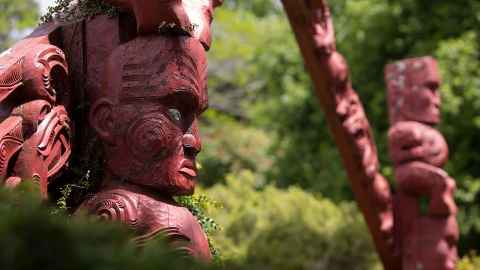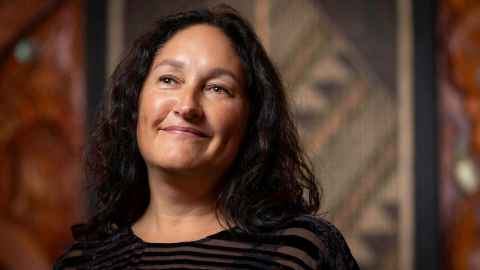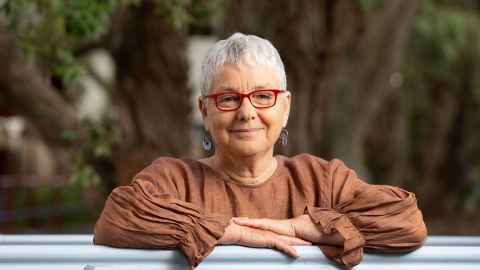Te Tiriti mind shift needed for universities
13 October 2022
A complete change in the way universities view their obligations under Te Tiriti o Waitangi will lead to better outcomes for everyone, say two University of Auckland academics.

Well intentioned efforts to ‘include’ Māori at New Zealand universities over the past 30 years have not had a significant impact, say Associate Professor Te Kawehau Hoskins, Pro Vice-Chancellor Māori, and Professor Alison Jones at the University of Auckland.
In a recent paper for the New Zealand Journal of Educational Studies, they are calling for a fresh and, for some, radical approach: ‘indigenisation’, in contrast to ‘inclusion’.
Associate Professor Hoskins says “admirable priorities” for Māori students like barrier-free access, learning free from racism, relationships with whānau and communities, responsiveness to learners’ identities and the incorporation of te reo and tikanga Māori into everyday activities now dominate educational rhetoric.
And although these priorities provide more practical guidance than previous ‘commitments’, they lack an overarching philosophical and political framework that sets a direction for real change.
“Indigenisation doesn’t refer to the inclusion of indigenous people, values and knowledge within a largely unchanged or superficially changed institutional structure, but to the normalisation of indigenous ways of being and knowing.
“I see indigenisation less as a state to be achieved than as a new direction of travel that doesn’t foreground terms like diversity and inclusion.”
The process of indigenisation involves a number of tensions, she says.
One of these is “both the recognition of the fact of colonisation (and the effects of its laws and practices) and the assertion of continuous Māori sovereignty (i.e., non-colonisation). Holding these two contradictory positions is at the heart of the indigenising project.”

She says Māori language terms are useful in leading the change of approach.
“For example, rather than inclusion (in the university), we would use the word rangatiratanga which states our positive authority and reminds that we are not merely to be understood as a colonised people with a need to be included.
“Other terms such as whanaungatanga (relationality) and manaakitanga (kindness, generosity, support) affirm that the mana (authority) of others is to be upheld, that relationships are central. These terms encompass everyone and make ethical and practical demands of everyone, they are not simply about ‘including Māori’.”
Professor Jones agrees that such Māori terms suggest immediate practices, not elusive goals.
“They are not as vague as inclusion, yet they are all about inclusion; they are not as elusive as ‘equity’, but they are all about equity. They do not mention ‘achievement’ but they invite engagement and therefore open possibilities for success.”
She points out that distancing the university from Māori student access and achievement problems can have the effect of letting it off the hook.
“It suggests these problems are rooted in a range of conditions outside the university, for example, the students’ socio-economic status, poor transition from low decile schools, a lack of preparation due to Covid, or the ongoing effects of colonisation.
“Universities don’t often enough see themselves/ourselves as a significant part of the problem, as not having identified or anticipated Māori expectations, and not having transformed in systemic and cultural ways to become places where Māori students and staff see themselves and want to belong.”

The previous inclusion approach, she says, increases the danger of deficit thinking.
“Māori are primarily seen in terms of what they ‘need’ and what they ‘lack’, such as necessary skills and knowledge, whereas in strengths thinking, Māori are seen positively as bringing knowledge and interests which are identified, built on and rewarded.”
And ironically, she says, inclusion approaches often primarily benefit non-Māori, who feel they must understand Māori in order to include them. They become upskilled (in te reo for instance), know more, feel better about themselves, can report better data and consider themselves more culturally competent.
An indigenising approach, on the other hand, benefits Māori and all others.
“Whanaungatanga and manaakitanga are about people, relationships and healthy environments, regardless of whakapapa and background. In this mindset, ‘cultural competency’ for non-Māori is about becoming more competent at understanding and being who we (non-Māori) are now, here, in Aotearoa.”
Associate Professor Hoskins makes the point that in the inclusion model, Māori individuals are often seen as informal resources, consultants, ‘help desk’ assistants and ‘native informants’ for non-Māori, with little formal recognition.
By contrast, in an indigenising approach, Māori leadership and expertise is normalised, recognised and rewarded at all levels of the organisation; Māori colleagues are not simply expected to fill in knowledge gaps or reduce the ignorance of others.
“So instead of focusing on the problems of adapting Māori to the organisation, where they must change to enter, remain, achieve and be included, the organisation itself changes.
“It becomes a site of the production of, and engagement with, mātauranga, and a place where we/tātou are all proud of the Māori strengths of the organisation, and Māori communities experience us as competent.”
Media contact
Julianne Evans | Media adviser
M: 027 562 5868
E: julianne.evans@auckland.ac.nz